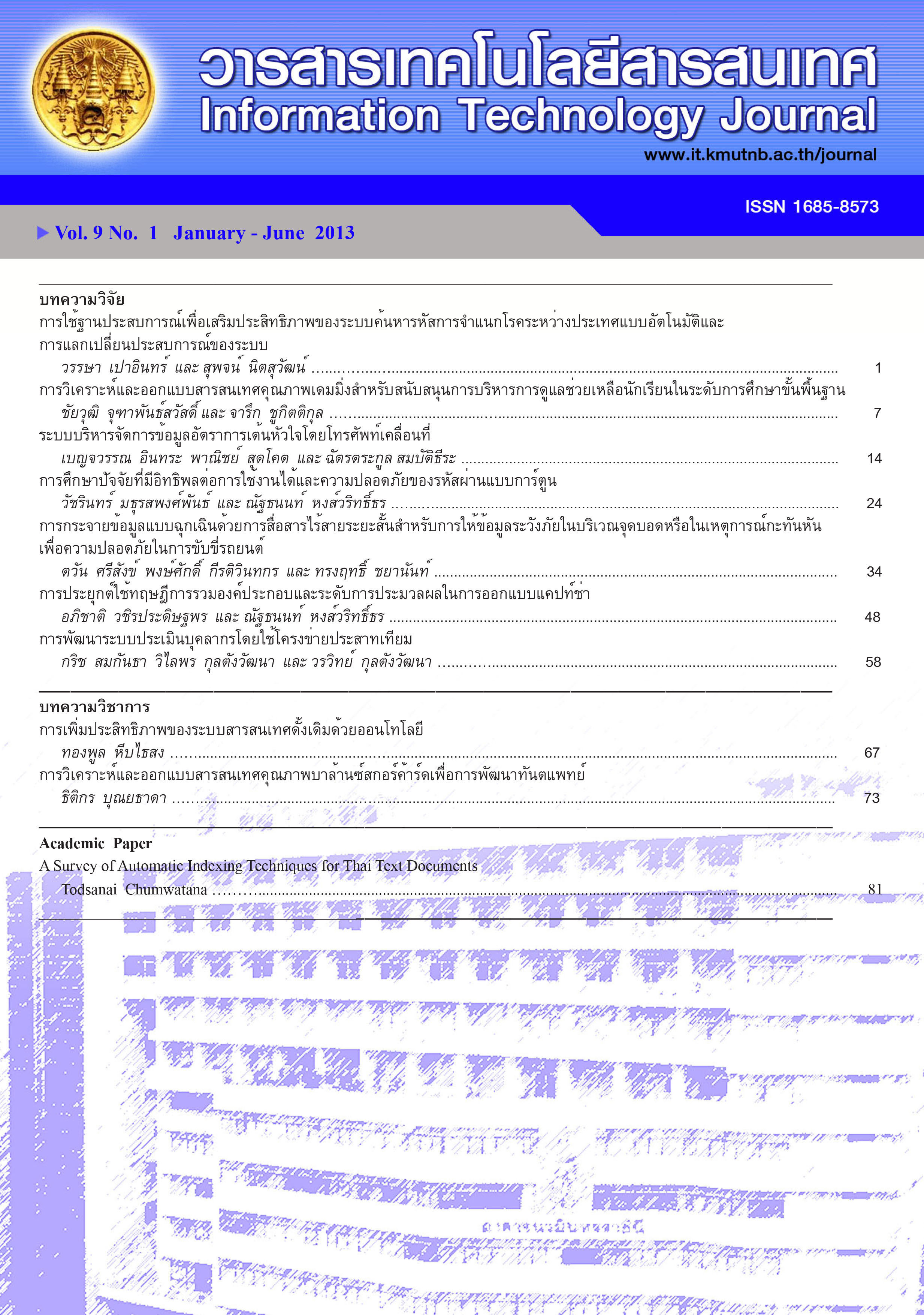การประยุกต์ใช้ทฤษฎีการรวมองค์ประกอบและระดับการประมวลผล ในการออกแบบแคปท์ช่า
Main Article Content
Abstract
งานวิจัยนี้ได้นำเสนอการพัฒนาแคปท์ช่าด้วยการใช้ทฤษฎีการรวมองค์ประกอบ ซึ่งเป็นทฤษฎีการเข้าใจภาพ ของมนุษย์ และทฤษฎีระดับการประมวลผลของความจำ โดยมีวัตถุประสงค์เพื่อศึกษาอิทธิพลของปัจจัย 2 ปัจจัย ประเภท ของแคปท์ช่า และลักษณะของคำถาม ที่มีต่อการใช้งานได้ของผู้ใช้งาน วัดผลการใช้งานได้จากเปอร์เซ็นต์ความถูกต้อง เวลาที่ใช้อัตราความถูกต้อง และความพึงพอใจของผู้ใช้งาน ด้วยวิธีการทดลองแบบ Between-subject design กับผู้เข้าร่วมการทดลอง 60 คน แบ่งเป็น 4 กลุ่มการทดลอง จำนวนผู้เข้าร่วมการทดลองกลุ่มละ 15 คน
ผลการวิเคราะห์แสดงให้เห็นว่า ปัจจัยทั้ง 2 ปัจจัยมีผล ต่อการใช้งานได้ และไม่พบอิทธิพลร่วมระหว่าง 2 ปัจจัย โดย ประเภทของแคปท์ช่าส่งผลต่อเปอร์เซ็นต์ความถูกต้อง และ อัตราความถูกต้องแตกต่างกันอย่างมีนัยสำคัญ ในขณะที่ ลักษณะของคำถามที่ใช้กับแคปท์ช่าส่งผลกับเวลาที่ใช้ และ อัตราความถูกต้องแตกต่างกันอย่างมีนัยสำคัญ อย่างไรก็ตาม ทั้ง 2 ปัจจัยไม่มีผลต่อความพึงพอใจของผู้ใช้งาน
Applying Recognition-by-Components and Levels of Processing Theories to Design CAPTCHAs
Apichart Wachirapraditporn and Nuttanont Hongwarittorrn
The current research proposed to develop CAPTCHAs designed based on the Recognition-by-Components, a theory of human image understanding, and Levels of Processing theories of memory. This research aimed to examine the influence of two factors, type of CAPTCHAs and type of questions, on the usability. The usability measurement was determined by percent accuracy, task completion time, pass rate and user satisfaction. The between-subject design was employed to conduct the experiment with 60 participants. There were four experimental groups of 15 participants.
The analysis results revealed that there were two main effects and no interaction effect. The type of CAPTCHAs significantly affected on percent accuracy and pass rate, while the type of questions significantly affected on task-completion time and pass rate; however, the user satisfaction was not affected by these two factors.


